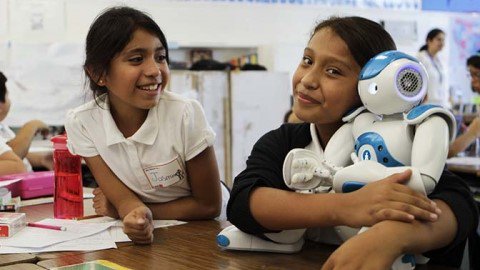New pre-released data from the Learning Counsel’s 2019 Survey indicates that 58 percent of schools now rate their highest pressure is their student’s social and emotional needs. Alongside this information is the Learning Counsel’s new research that a whopping 27 percent of students nationally have left traditional public education for alternatives, including private schools, charters, online schools, homeschooling and a mix of these. Some States like California are experiencing 30 percent attrition, with 107 districts losing more than 15 percent of their enrollment in 2018, rumored to be accelerating in 2019. This data is “hidden” inside governance claims that include charters as if they are traditional public schools and underestimate the homeschooling movement.
This new data suggests that many schools are living a cascading failure with seemingly no way out. Many have a preponderance of low-income, special needs and English Language Learner students which can arguably be said to cost more and use more intensive interventions. Student rights to equitable education sometimes mean the district can’t even close costly small school outposts to consolidate into central locations.
A “cascading failure” is a failure in a system of interconnected parts. The failure of one part means the other parts take up the slack for the failed component, this in turn causes those nodes to fail over from the pressure, prompting more failure in a vicious cascade. We’re familiar with cascading failure from awareness of power transmission grids, the financial systems, how the United States Postal Service has been overrun by Fed-X and UPS into huge debt and more. No one who lived through the 2008 bank failures would say that other parts of the economy were unaffected by the cascade into recession.
The evidence that failures in education to support the needed workforce development for the tech age is plain to see in generations whose education did not lead to the levels of employment enjoyed by earlier generations. That’s at the macro level of the economic impact of education as failing node. Results at the macro level can also be said to include this generation’s disproportionate number of substance-addicted homeless, crime and more, although that is a harsh view. It nonetheless is one of the coincidentally timed probable causes, since accomplishment in life is a great ameliorator of worries.
At the micro level, schools and districts themselves are starting to feel the burn from a lack of systemic innovation. First came the cries for accountability resulting in increasing numbers of required reports. Then a re-write of academic standards that had to be mapped to teaching and learning, constantly in revision. Then massive numbers of testing requirements to disrupt and create heights of anxiety for all involved in a political appeasement move by higher policy makers.
Alongside this, professional-grade digital curriculum started to overtake the playing field, pulling attention of parents and students to apps and websites that could offer learning without the intermediary of an institution. Like a river, tech started to flow around the immovable boulders of centuries-old traditional schooling. Then ever-more disaggregation of the field into alternate schooling choices accelerated. The river is a now a flood, with districts all over the nation laying off teachers, dealing with imponderable pension debt, closing what schools they can and struggling to innovate-in-place.
The Learning Counsel’s 2019 Digital Transition Survey of America’s schools and districts showed additional concerns by school leaders.
In a question asking the 462 responding schools and districts to assign a value to a list of possible pressures being experienced as an institution with a 1-10, with 10 being the highest, the findings also show that:
45 percent gave a high-pressure rating of 8-10 to the “ever-changing academic and technical standards (demanding to be kept up with).”
42 percent gave a high-pressure rating of 8-10 to “increasing technology complexity.”
35 percent gave a high-pressure rating of 8-10 to “a sense of growing educational disequilibrium.”
Another finding was that the largest districts were disproportionately citing the most concerns with “student attrition due to homeschool, charter or private school options,” or “other student attrition for any reason.” Many of those districts cited these concerns with a 9-or-10-level of pressure.
Something is going on, and the defining of it has been arduously pursued by many. What hasn’t been done is to draw together all the competing elements outside education to look at where education must inevitably go to “fix” it. Fixers are almost universally introspective insiders, tweaking the existing standard structure.
If the starting “why” to get the ball rolling in the first place was technology and ubiquitous information accessible anytime and anywhere disrupting everything, and those things are at a faster rate of change than human systems like education can keep up with, it is simple logic to see that failure-to-adapt-using-technology is both the villain and fix.
It’s a bold thing to say, but the surge shorting out the education system is technology, not only by inadequate use inside education but its rate of impact on all other aspects of human industry including its insistency that humans are ready to be employed to further serve it (technology-as-industry). It’s a vicious total transformation requirement simply because technology in its present and burgeoning state actually can do a full disintermediation with fully individualized digital pathways, and people are aware that it can, yet schools don’t use it that way. One machine can keep track of, and calculate statistics of, millions of students at once to provide recommendations for each specifically. One program can inexhaustibly redirect lessons with slight alterations to lines of questioning and examples and exercises, with infinite patience, until a student gets the right answer. Teachers cannot do these things but are not being reengineered to do what is vitally necessary – be human and meet the topline need of social and emotional development of students.
Being human should be what they are best at doing, and yet most schools are focused on their subject knowledge and delivery methodologies in complete disregard of the sheer scope of the internet and majestic professionally scope-and-sequenced fully automated courseware.
Our highest-level political officers, perhaps our actual system has either blocked or not led a new corollary of refined humanity needed to match the explosion of technology. Friction of inconceivable proportions has resulted.
The tinkering, the playing with definitions and methods of teaching and learning, is proving inadequate to the task because it simply does not acknowledge the breadth of technology’s capacities, nor greater world stages of economics, culture, and politics. True personalization is being done in nearly every other industry, but not here, not at scale.
It is a positive thing that the tinkering continues, that the strivings of millions still aim to create a goodness out of the circumstances of our complex environment for students.
To really come to grips with what we have to do as individual learners, as teachers, as school and district and government leaders, we need to fully analyze the real villain of this cascading failure and come to grips with what would actually solve it, for real. We need to understand the sum of the effect and what technology is missing and unapplied as yet.
The villain (tech) may just also be the savior, allowing teachers the wide world of social and emotional expertise to conquer and command. In transformed schooling that blends individualized student workflow with lively hands-on experiences, teachers will be challenged to have as their raison d’etre the interweaving of humanity around and in service of an otherwise technology-laden personalized student journey so that screen learning is complimented by a cultural revival.
About the Author
LeiLani Cauthen is CEO of the Learning Counsel and author of The Consumerization of Learning.











